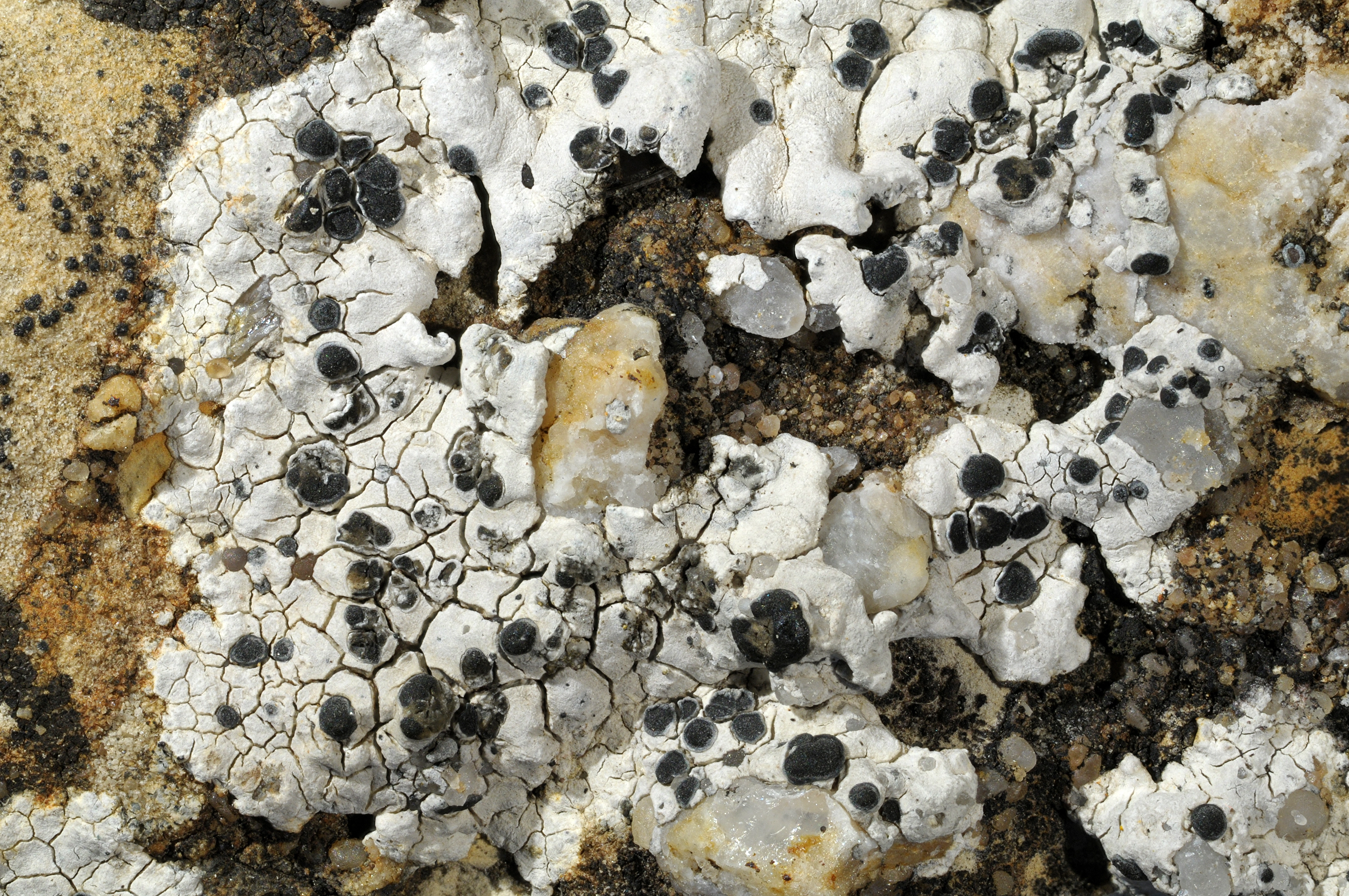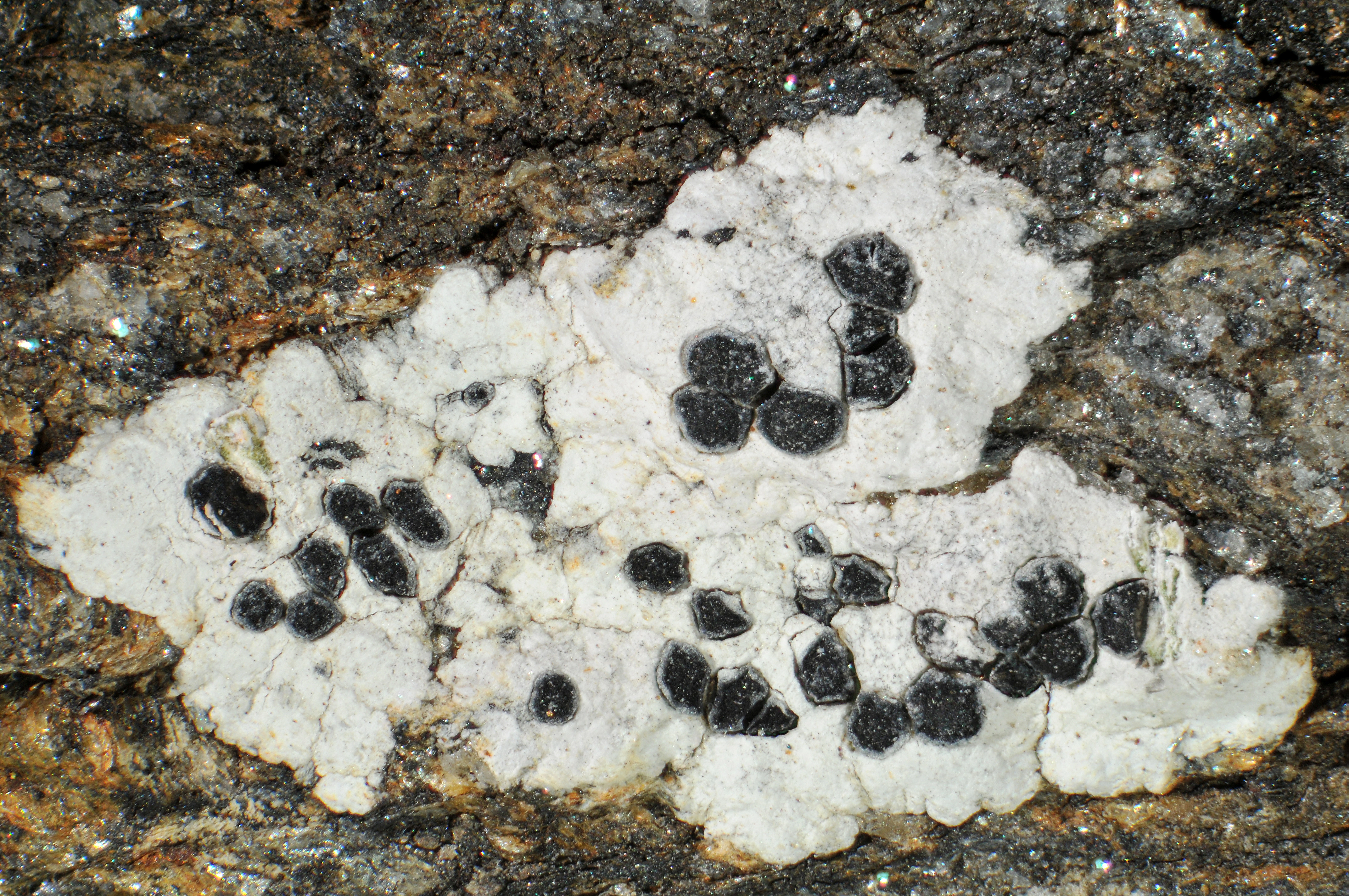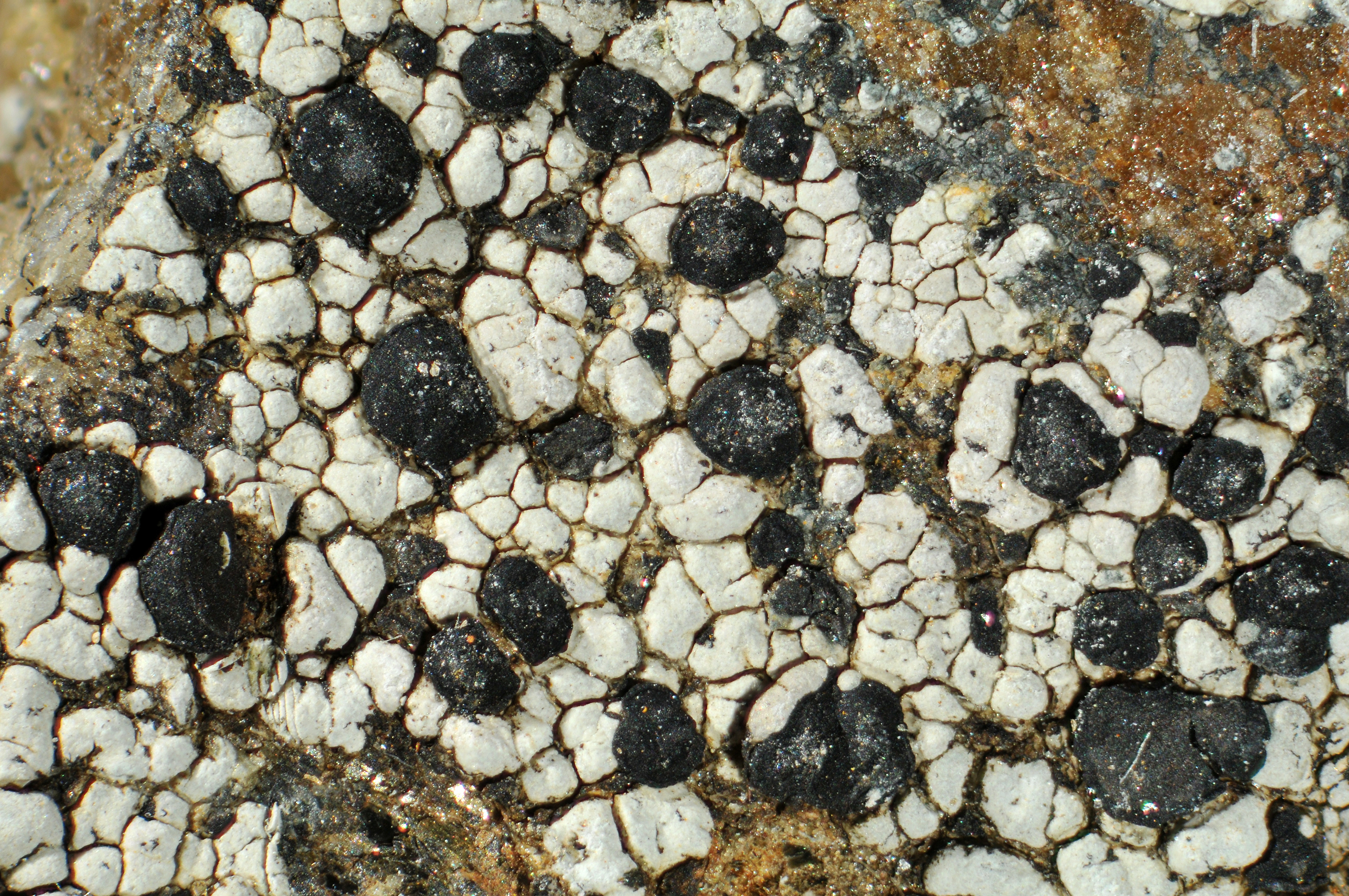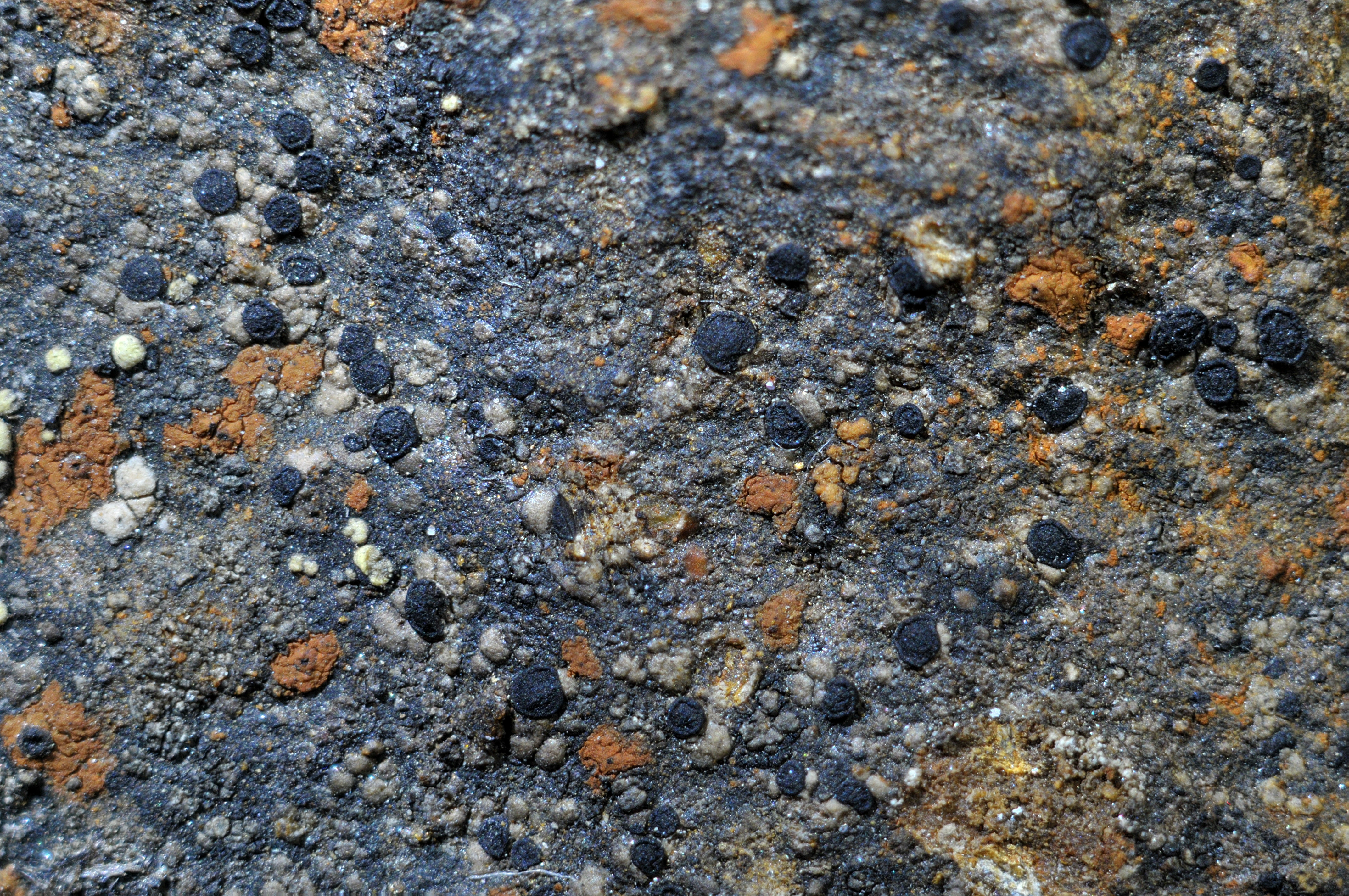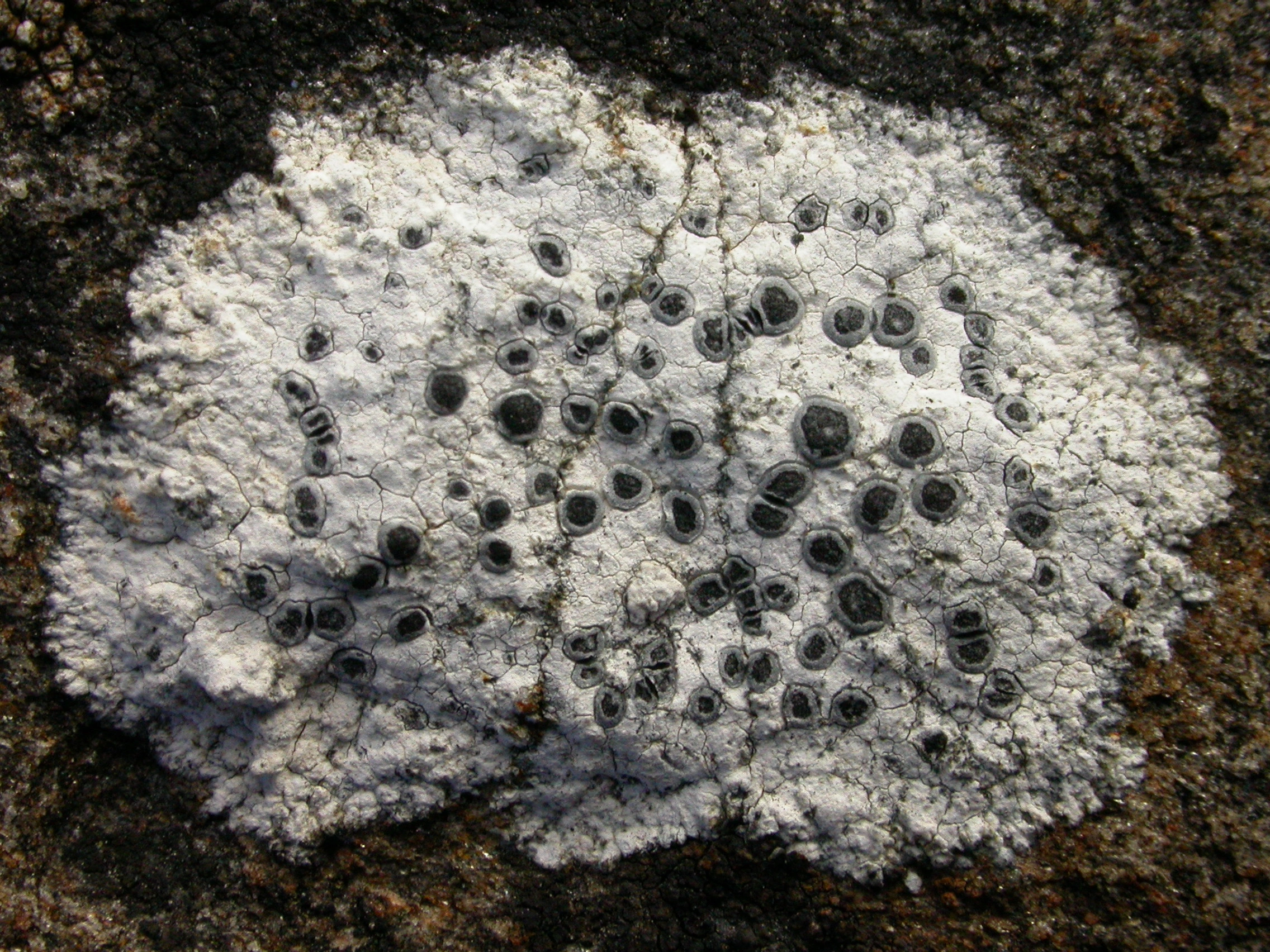Rhizocarpon caeruleoalbum
- Innhold
- Morphology
- Chemistry
- Habitat
- Comment
- Look-alikes
Morphology
Thallus areolate or rimose to partly continuous, up to 5 cm diam.; hypothallus poorly developed or absent, black, white pruinose; areolae up to 1.5 mm diam., pure white to greyish white, dull, pruinose, mainly angular, plane to weakly convex; medulla KI–. – Apothecia up to 1.5 mm diam., black, mainly orbicular, plane to weakly convex, with a thick, persistent, and usually distinctly pruinose margin and an epruinose or more rarely faintly pruinose disc; excipulum dark greenish brown in the rim, inner part pale brown to colourless, containing crystals partly dissolving in K, K+ yellow; hypothecium dark brown, K–; hymenium colourless; epihymenium olivaceous green, containing crystals dissolving in K, K– (crystals K+ yellow, epihymenium turning more brightly green); ascospores 8 per ascus, 1-septate, persistently colourless or turning faintly green when old, 16–20 × 8–10 µm. – Conidiomata not seen.
Chemistry
Stictic acid; spot tests: medulla PD+ orange, K+ yellow, C–.
Habitat
On calciferous rock.
Comment
The species differs from R. chioneum mainly in the colour of the epihymenium, the size of the ascospores, and the size of the thallus; from R. expallescens mainly in the chemistry; from R. glaucescens mainly in the colour of the epihymenium, size of the ascospores, and the chemistry; and from R. umbilicatum in the septation and size of the ascospores. The species is known from only few localities.
